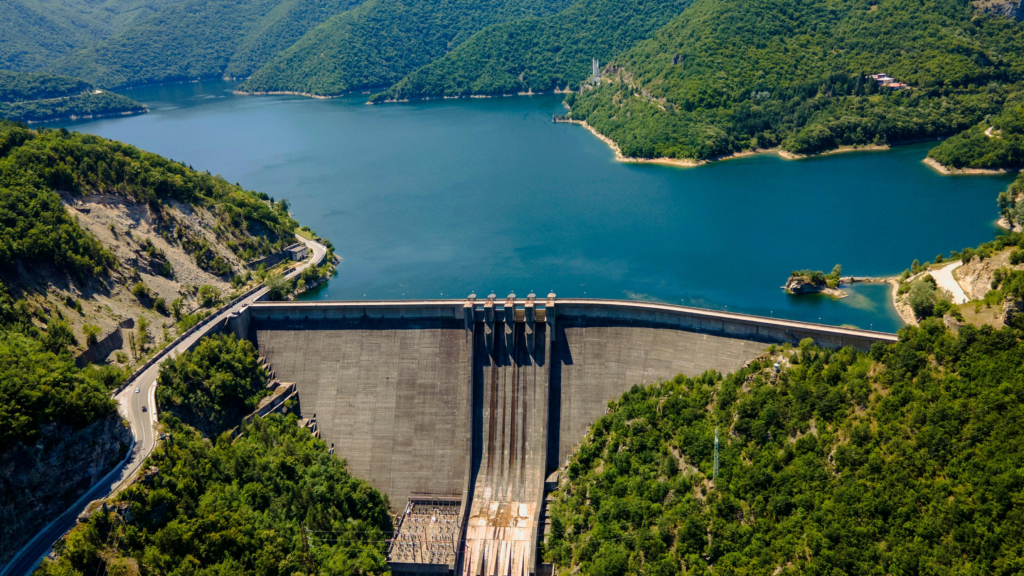
You might be thinking by reading the title that how can ‘Nuclear Energy is the Best Source of energy’ considering the biggest disasters of Chernobyl and Fukushima and how is it not solar energy. This article will answer all your questions and debunk the common myths around various sources of energy. We will discuss about nuclear fission and fusion, carbon emissions, pros and cons of nuclear energy and much more. These details will help you understand the complete truth about all available sources of energy and why nuclear energy is considered among the best and safest sources.
Currently 33 countries operate nuclear power plants which fulfills 10% of global energy demands. In 2016, the U.S. Energy Information Administration estimated that global nuclear power generation would increase from 2,344 terawatt hours (TWh) in 2012 to 4,500 TWh in 2040.
Table of Contents
How Nuclear Power Plant works, Nuclear Fission and Fusion
Nuclear energy is the energy produced by atomic reactions. There are two atomic reactions by which electricity can be generated: nuclear fission and nuclear fusion.
- Nuclear fission involves splitting the nucleus of an atom into two or more smaller nuclei, along with a few neutrons and a large amount of energy. In simple words, when an atom breaks into two or more parts, it releases energy.
- Whereas nuclear fusion involves combining two light atomic nuclei to form a heavier nucleus, releasing energy in the process. Fusion is the process that powers the sun and other stars. It’s the process of forming one atom with two atoms, which releases more energy in comparison with fission. However, the process of using nuclear fusion for actual energy consumption is still in R&D phase.


Nuclear power plants use nuclear reactors for the controlled chain reactions for the fission process which generates a lot of heat. Uranium 235 is generally used worldwide for this process. This heat(energy) is now used to boil the water and thus steam is produced. Now this steam is used to rotate the turbine which activates the generator (mechanical > electrical energy) which ultimately produces electricity.
Why other Sources of Energy aren’t the best?
There are many sources that might look safe, but they’re not. Let’s dive into them one by one:
Solar Energy: This is the most suggested source of energy by the people, but they don’t know the cons behind it. There is no problem in the energy given by the sun, but there are major problems with the solar panels that convert that solar energy into electricity.
1) The manufacturing of these panels create pollution through various means. Mining and refining silicon are energy-intensive and can lead to habitat destruction and water contamination. The use of toxic chemicals in production can cause soil and water pollution if not properly managed. Manufacturing process emits greenhouse gases and require significant water usage, contributing to pollution. Additionally, improper disposal of end-of-life panels can release hazardous substances into the environment.
2) Its usage gets severely affected in cloudy regions or areas getting low sun light, and in unpredictable weather
3) Getting instantaneous energy in large quantity is not possible



Hydropower: Hydropower plants don’t release carbon footprints, but they may worsen the condition of the ecosystem. The hydropower plant is based on the structure of a dam. The dam holds the flow of water, which changes the flow, temperature, and conditions of the water. This may result in aquatic life being disrupted due to changes in temperature and flow on which lives depend. It can disrupt the water distribution to the community, which may lead to many calamities such as floods, famine, etc. Due to the natural flow of water, the oxygen level of the water can also reduce. In many cases, the dam can collapse, which may result in disaster.
Coal/Oil/Natural Gas: As we all know it produces a high amount of carbon-dioxide increasing the global temperatures. It can be used for emergency purposes, but it can’t be considered as the primary alternative.
Wind Energy: If we talk about the disadvantages of this source, then it will be too different from the previously mentioned sources. Neither does it emit carbon, nor does it interrupt the environment, so how is it not the best source? Wind energy converts electricity by windmills, and they are so huge that it’s too difficult to maintain them. It’s the most expensive source of energy which requires $2.5 to $3.5 million to set up one wind turbine. In some cases, the turbine got damaged due to unfavorable environment and maintenance. As you can see the cons of the other sources, here is additional information about the exact carbon emissions of these sources:
The amount of carbon dioxide (CO₂) emissions per kilowatt-hour (kWh) varies significantly across different energy sources:
| Coal | 900 g CO₂/kWh |
| Oil | 790 g CO₂/kWh |
| Natural Gas | 480 g CO₂/kWh |
| Wind | 11 g CO₂/kWh |
| Solar | 45 g CO₂/kWh |
| Hydropower | 24 g CO₂/kWh |
| Nuclear | 12 g CO₂/kWh |
How Nuclear Energy is the best available source currently?
1) 24/7 availability of Energy in any part of the globe
Nuclear power plants can be built anywhere where there is power requirement, be it Antarctica, be it Sahara Desert, they can be set up anywhere and can produce electricity throughout the year 24/7.
Furthermore, concept of floating nuclear power plants is a reality now where the nuclear energy is made inside a moving ship which can be taken to any place where there is sudden power requirement. It is a game changer as large amount of energy can be received anywhere without making any actual power plant in that place which would take several years.

Akademik Lomonosov
2) Near to Zero greenhouse gas emission
Fossil fuels produce more than 35 billion Tonnes of Greenhouse Gas (CO2) per year. These gases cause deaths to several million people worldwide each and every year. Whereas nuclear power plants produce nearly no greenhouse gas. This is because as compared to the thousands of tons of coal required for conventional power plants, the amount of uranium required is far less. To actual surprise, it has 3 times less carbon emissions than its rival solar power.
3) Gigantic difference in Energy outputs
Energy by 1 gram of Uranium 235 = 2,500,000x times energy produced by 1 gram of coal
Overall running costs are low for nuclear power plants as there is small amount of requirement of Uranium only to begin the process.
Huge Nuclear Disasters and the negligence behind them
On April 26, 1986, the world’s biggest nuclear disaster occurred in Chernobyl, USSR (currently in Ukraine) where 31 people died and 70,000+ were affected by the ionizing radiation. The accident happened due to a combination of flawed reactor design (RBMK reactor) and operator errors during a safety test. Operators disabled safety systems and violated protocols, leading to a massive power surge and explosions. This released significant radioactive materials, causing immediate and long-term health and environmental impacts.



On March 11, 2011, a magnitude 9.0 earthquake and subsequent tsunami struck Japan, causing a catastrophic failure at the Fukushima Daiichi Nuclear Power Plant. Reactor meltdowns, explosions, and major radiation releases caused by the accident forced tens of thousands of people to evacuate. While the direct casualties from the radiation were minimal, nearly 18,000 people were affected by the ionizing radiation. These two incidents severely impacted the then ongoing and upcoming nuclear projects and raised several questions on its safety.
Best Source of Energy
You would probably think how can this be the best source of energy after these accidents? If you follow up on all the disasters of nuclear history, either they happened due to mismanagement or the absence of precautionary measures. From Fukushima till today, not a single nuclear accident has ever happened.
In Chernobyl, the head in charge of the test was 25 years old, who was 6 months experienced, but in hazardous places, it’s mandatory to have highly experienced workers. This happened due to complete mismanagement of the test. There are 440 nuclear power plants in the world and approximately 13,000 nuclear warheads, and not a single disaster has ever happened since then due to the extreme precautionary measures. There is fearmongering about the ionizing radiation emitted by the power plant spreading across the earth, which is completely false. The radioactive waste is kept in a small chamber and buried deep into the land in order to prevent the leak of those materials.
If we compare this with other sources, they have contributed more to death in comparison with nuclear disaster. In nuclear disaster, nearly 31 to 50 people died and indirectly thousands of people died after many years due to ionizing radiation, but due to coal, petroleum, and biomass, nearly 100,000,000 died indirectly in the last 50 years due to the pollution created by the fuels. Similarly, manufacturing of solar panels contributed to pollution which is also a big chunk of contributor to pollution.

Cons of Nuclear Energy and Power Plants
After the nuclear incidents, building new nuclear facilities is already becoming more expensive due to increased restrictions and frequent safety inspections. The safety of nuclear power plants can be seriously threatened by sensitive events such as cyber and terrorist attacks. In several wars and conflicts, nuclear power plants have been targeted.
Even though utmost safety and security is maintained to make the nuclear power plants safe, if there happens a mishappening somehow after series of blunders (like Chernobyl) then the place surrounding it becomes inhabitable for thousands of years for any living organism. Generation of radioactive waste is matter of debate. For an example, US generates around 2000 metric Tonnes of radioactive waste each year. And lastly nuclear energy is non-renewable source of energy.
Conclusion
At present, nuclear energy can be considered the best source of energy until there is tremendous evolution in the materials and technology used in solar panels which won’t be creating high carbon emissions. We can take the example of plants and trees. They are the perfect natural converters of solar energy, unlike solar panels.
As discussed currently 33 countries operate nuclear power plants which fulfills 10% of global energy demands and since its beginning only 3 accidents have happened that too due to human errors and negligence. As all the countries are abiding by strict rules and guidelines the probability of any accident is diminishing day by day. All these discussion and facts convinces that currently nuclear is the best source of energy in most of major aspects compared to other sources.
Interesting Facts
- US Navy was the first organization to use the nuclear technology for actual purpose. They used it in propelling the submarine called USS Nautilus in 1954.
- France fulfils 71% of its entire energy demand using nuclear energy.
- A commercial nuclear reactor’s fuel is never sufficiently enriched to enable an explosion similar to that of a nuclear bomb.
- World’s biggest Nuclear Power plant which is Kashiwazaki-Kariwa (60 TWh annually)
For reference: 1 TWh = 1000 GWh (1 GWh = 1000 MWh, 1MWh = 1000 KWh and 1 kWh = 1 Unit of electricity)

Om Sai Ram beta, God bless you, very good 😙 topic,go ahead and enjoy your own life with all efforts.